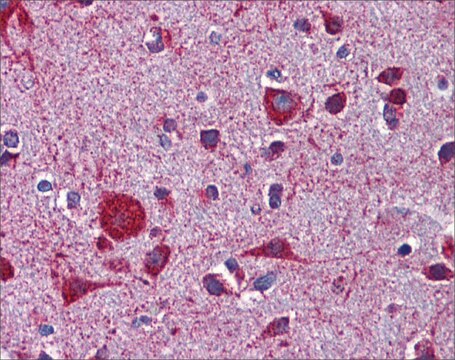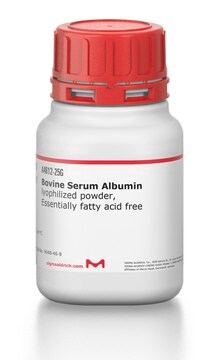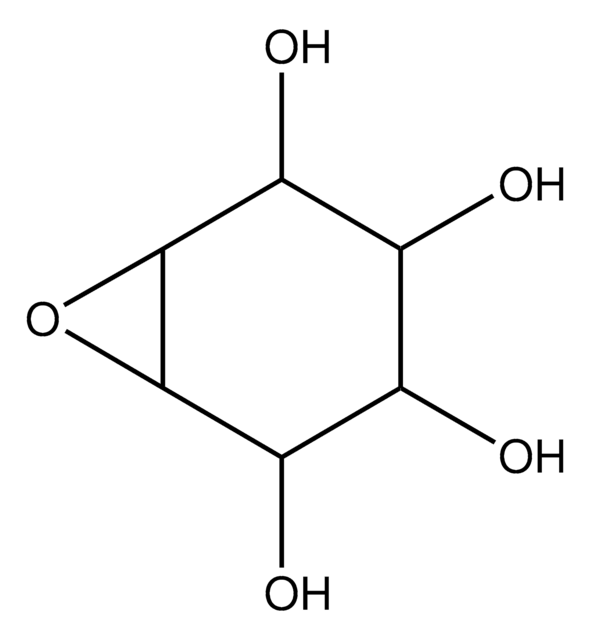MABN1872
Anti-ApoER2 Antibody, clone 4H3E6
clone 4H3E6, from rat
Sinônimo(s):
Low-density lipoprotein receptor-related protein 8, ApoER2, Apolipoprotein E receptor 2, LRP-8
About This Item
Produtos recomendados
fonte biológica
rat
Nível de qualidade
forma do anticorpo
purified immunoglobulin
tipo de produto de anticorpo
primary antibodies
clone
4H3E6, monoclonal
reatividade de espécies
mouse
técnica(s)
immunofluorescence: suitable
western blot: suitable
Isotipo
IgG2aκ
nº de adesão UniProt
Condições de expedição
ambient
modificação pós-traducional do alvo
unmodified
Informações sobre genes
mouse ... Lrp8(16975)
Descrição geral
Especificidade
Imunogênio
Aplicação
Immunofluorescence Analysis: A representative lot detected developmental stage-dependent ApoER2 expression patterns among 4% paraformaldehyde-fixed, OCT-embedded frozen embryonic (E13.0 to E18.5) and neonatal (P0) brain tissues from wild-type, but not Apoer2-knockout mice (Hirota, Y., et al. (2015). J. Comp. Neurol. 523(3):463-478).
Western Blotting Analysis: A representative lot detected HA-tagged full-length mouse ApoER2 exogenously expressed in HEK293T cells (Hirota, Y., et al. (2015). J. Comp. Neurol. 523(3):463-478).
Neuroscience
Qualidade
Western Blotting Analysis: 0.5 µg/mL of this antibody detected ApoER2 in 10 µg of embryonic E16 mouse brain tissue lysate.
Descrição-alvo
forma física
Armazenamento e estabilidade
Outras notas
Exoneração de responsabilidade
Não está encontrando o produto certo?
Experimente o nosso Ferramenta de seleção de produtos.
Código de classe de armazenamento
12 - Non Combustible Liquids
Classe de risco de água (WGK)
WGK 1
Ponto de fulgor (°F)
Not applicable
Ponto de fulgor (°C)
Not applicable
Certificados de análise (COA)
Busque Certificados de análise (COA) digitando o Número do Lote do produto. Os números de lote e remessa podem ser encontrados no rótulo de um produto após a palavra “Lot” ou “Batch”.
Já possui este produto?
Encontre a documentação dos produtos que você adquiriu recentemente na biblioteca de documentos.
Nossa equipe de cientistas tem experiência em todas as áreas de pesquisa, incluindo Life Sciences, ciência de materiais, síntese química, cromatografia, química analítica e muitas outras.
Entre em contato com a assistência técnica








